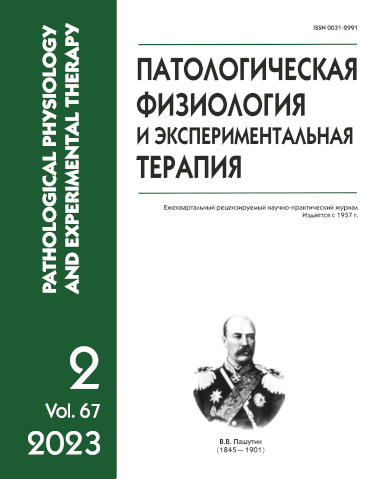Antifibrotic effect of fucoxanthin in tetrachloromethane-induced hepatic fibrosis
Abstract
Currently, the most promising strategy for suppressing the development of liver fibrosis is the inhibition of a canonical pathway of transforming growth factor-β, the main profibrogenic growth factor stimulating the activation and differentiation of hepatic stellate cells into myofibroblasts. The aim of the study was to evaluate the effectiveness and mechanisms of action of fucoxanthin in liver fibrosis. Methods. The study was conducted on 50 white male mice aged 8-10 weeks, weighing 20-22 g. For the experiments, fucoxanthin was administered at a dose of 10 mg/kg daily, orally, through a probe. The study included two stages. The first stage was modeling carbon tetrachloride-induced liver fibrosis. Three groups of 10 animals each were used: group of intact animals; test group that received 2 µl/g of 25% solution of carbon tetrachloride in peach oil, intraperitoneally; and control group treated with peach oil in equivalent doses. The second stage was focused on studying the fucoxanthin effectiveness and antifibrotic mechanisms. Two groups of animals with liver fibrosis were used at this stage: untreated, comparison group and main group, which was administered fucoxanthin at a dose of 10 mg/kg for 5 weeks. Severity of liver fibrosis was assessed with the METAVIR scale. Concentration of transforming growth factor-β was measured in liver homogenates by ELISA. Amount of α-SMA+ cells and concentrations of tissue inhibitor of matrix metalloproteinases-1, matrix metalloproteinases-9 and -13 were assessed immunohistochemically. Sirius Red staining was used to assess severity of fibrosis. Results. Fucoxanthin 10 mg/kg produced an antifibrotic effect mediated by inhibition of the main profibrogenic factor, TGF-β. The decrease in TGF-β resulted in decreases in the number of myofibroblasts, TIMP-1 and connective tissue in the liver. Conclusion. Fucoxanthin can be considered as a promising therapy for liver fibrosis.






